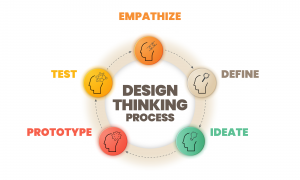I have often thought mental health issues weren’t to be taken too seriously.
This is because the issue and its treatment, especially therapy, is not considered a major topic of discussion where I come from.
Prior to this moment, I have lived most of my entire life in Africa where we hardly had conversations about mental health. At best, when it became a trending idea, I felt there was an attempt to create a safe space for people who demanded sympathy for their life circumstance, which oftentimes affected their productivity.
However, as my understanding evolved, I began to connect the dots around my own mental health experience; from dealing with the trauma of losing my father to dealing with a toxic employer, it became clear that my mental well-being would have yielded better outcomes if I had the right information as well as access to the right kinds of treatment.
According to the National Institute of Mental Health Disorders, 1 in 4 people will experience a mental health issue in any given year. In America alone, 1 out of 25 people will experience a mental health illness yearly that is serious enough to interfere with or impact major life activities. That research has not included global issues like the COVID-19 pandemic which continues to affect the entire world.
These statistics are enough to prove why the U.S. spent an immense $238 billion on mental health services in 2020. Yet, when it comes to the treatment of mental health, a lot still has to be done in finding the right balance of treatment for the patient, without forgetting there are a limited number of qualified mental health practitioners available.
In my opinion, not having enough qualified mental health practitioners is one problem and designing solutions that combine this with the preferences of the mental health patient is another. That’s where design thinking can help.
Design thinking is a tool for solving wicked problems. It emphasizes how designers are expected to solve a User’s problem from the standpoint of empathy. Simply put, this means putting the User at the center of the problem-solving process. In this way, you have a better chance at arriving at a solution that is effective for the User.
The design thinking process, which is usually iterative, and involves five phases – Empathize, Define, Ideate,  Prototype, and Test, can be applied to the mental health treatment process, and most likely would help in arriving at better mental health treatment outcomes for patients, irrespective of their demography.
Prototype, and Test, can be applied to the mental health treatment process, and most likely would help in arriving at better mental health treatment outcomes for patients, irrespective of their demography.
Take the Gen Z (individuals born between 1997 and 2012) population, for example. It is expedient to understand its unique experience with mental health illness, before designing or prescribing a solution to them. To begin with, studies show that Gen Z is currently the most stressed demographic, with less likelihood of seeking treatment, as well as a tendency of having no memory of a world without the internet, smartphones, and social media. Adobe reports half of this population spends 10 hours or more online per day. This could be the reason why many of them would prefer to turn to TikTok for advice, either for affordability or the ease and comfort they enjoy with their use of technology. Although this exposes them to lots of misinformation and unqualified individuals, we can begin to have an idea of the type of treatment to design for them.
Therefore, for any mental health solution to be fully effective for the Gen Z population, adequate attention to detail must be given to understanding “a sample persona” who can represent the larger group, while engaging the design thinking process.
While we continue to behold the constant evolution of the mental health space, and the changing life experiences of the world as a whole, there is a unique opportunity for all stakeholders to participate in designing better treatments, solutions and outcomes.
Temitope E. Ajibola is a Venture Capital Fall Associate at the AmFam Institute, where he contributes to the sourcing of social enterprises for investment under the “Healthy Youth Development” investment vertical, while also completing a Masters in Business Administration at Morgan State University. A first-generation college student from Nigeria, his greatest passion is to embody the possibilities that exists in often over-looked and underrepresented communities.

